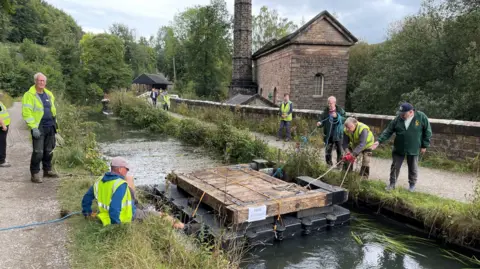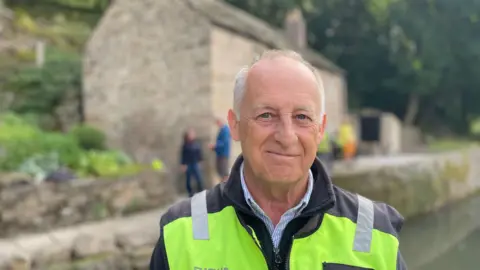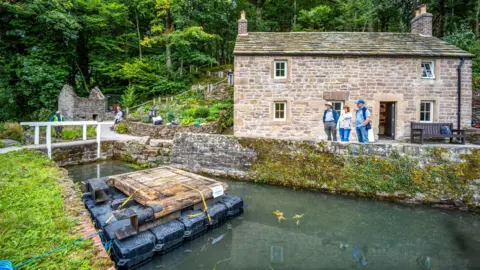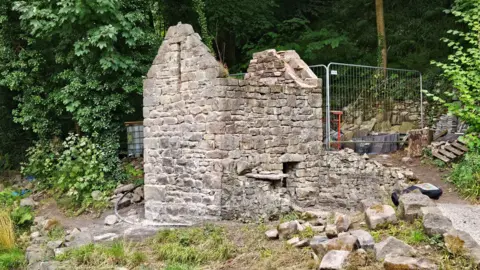Lock gate towed on pontoon to 19th Century cottage
 BBC
BBCA lock gate has been hand-towed down a canal on a pontoon by volunteers and moored by a 19th Century cottage built by Florence Nightingale's uncle.
Aqueduct Cottage, near Cromford, in Derbyshire, was a lock-keeper's cottage, which has not had a gate for 200 years.
Last year, the cottage, which had been empty since 1970, was opened to the public after a four-year restoration project. Now, a lock gate has been moved to the cottage.
Ron Common, volunteer project manager, said this was "hugely significant - it’s the icing on the cake of the restoration of Aqueduct Cottage".

The Grade II listed cottage, owned by Derbyshire Wildlife Trust, was constructed in 1802 by Peter Nightingale, with nursing pioneer Florence Nightingale visiting as a child.
As part of the journey along Cromford Canal on Wednesday, the pontoon - named HMS Florence - passed over the Derwent Aqueduct, where the canal crosses the River Derwent.
Derbyshire County Council had to give special permission for it to cross the aqueduct, said Mr Common.
He said: "It's an ancient monument, and boats haven’t passed over that aqueduct for about 40 years."

The gate started its journey on the canal at the Wharf Shed and was towed using ropes.
A footbridge had to be turned and stop planks moved out of the way before it reached its destination.
The gate was donated by the Canal and River Trust after it was removed from service.
Ian Hooker, one of the volunteers from Friends of Aqueduct Cottage, said: "The idea of having a lock gate is to act as a physical representation of what the purpose of the cottage was and why it was built here in the first place.”
 Alastair Newton
Alastair NewtonHe said the original reason for the lock gate here - called a stop gate - was to stop water moving between Cromford Canal and its Lea Wood Arm.
“It was a condition of Peter Nightingale building his Lea Wood Arm, which was a canal that went up to his mills at Lea Bridge, that he should have a lock gate at the entrance.
“The Cromford Canal was happy for him to join his canal to theirs so long as they didn’t risk him using any of their water."
 Friends of Aqueduct Cottage
Friends of Aqueduct Cottage In a few weeks' time, a spider crane will lift the stop gate off the pontoon and position it at the entrance of Lea Wood Arm.
This is one of four projects ongoing by the Friends of Aqueduct Cottage.
The group is also restoring a stone privy and pigsty outbuilding next to the cottage, renovating the cottage's top garden, and creating a new woodland path to the garden.
Follow BBC Derby on Facebook, on X, or on Instagram. Send your story ideas to [email protected] or via WhatsApp on 0808 100 2210.
